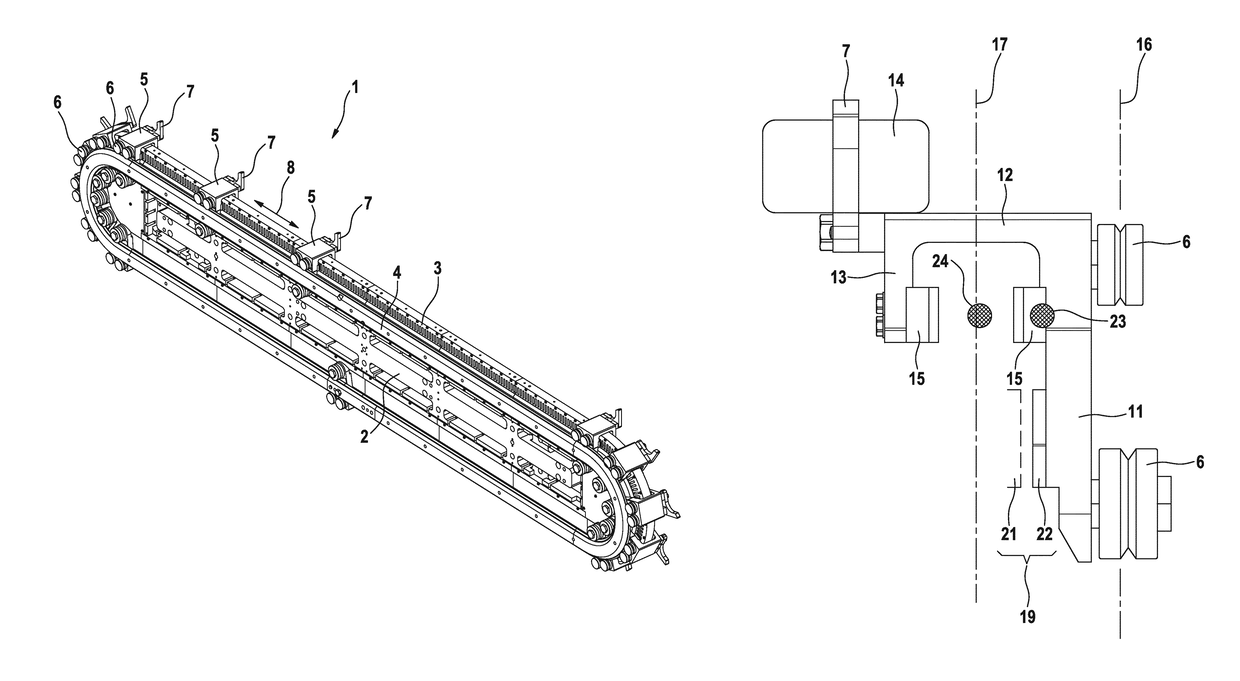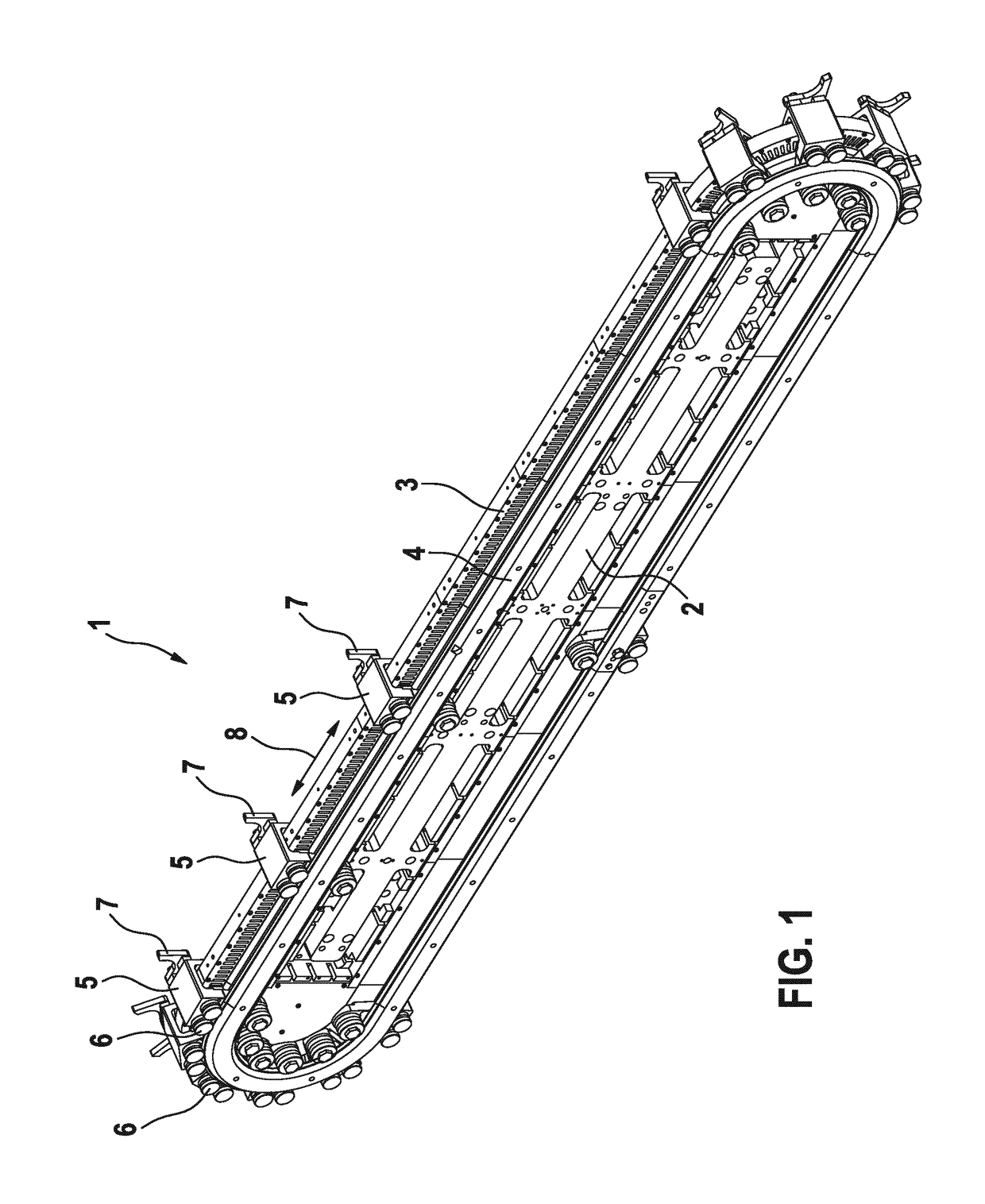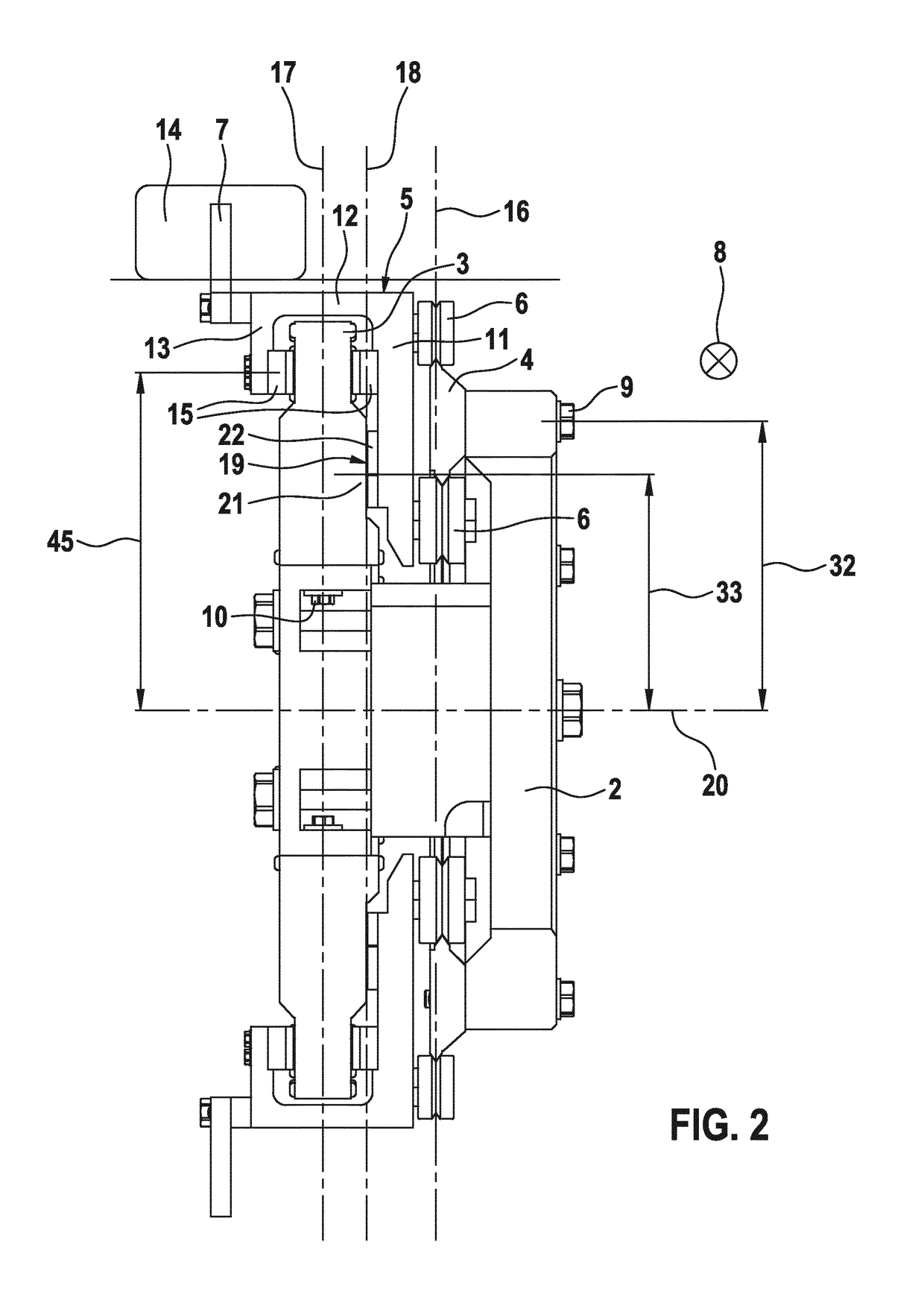Transporting arrangement
a technology of transport arrangement and arrangement, applied in the direction of dynamo-electric components, dynamo-electric machines, non-mechanical conveyors, etc., to achieve the effect of convenient installation, reliable operation and cost-effectiveness
- Summary
- Abstract
- Description
- Claims
- Application Information
AI Technical Summary
Benefits of technology
Problems solved by technology
Method used
Image
Examples
Embodiment Construction
[0033]A first exemplary embodiment is described below with the aid of FIGS. 1 to 6. FIG. 7 shows a second exemplary embodiment, and FIG. 8 shows a third exemplary embodiment. Identical or, respectively, functionally identical components are provided with the same reference signs in all of the examples.
[0034]FIG. 1 shows the transporting arrangement 1 in an isometric view. FIG. 2 shows a sectional view. The transporting arrangement 1 comprises a carrier 2. A stator unit 4 and a guide rail 4 are mounted on this carrier 2. The guide rail 4 is attached by means of a first screw connection 9 to the carrier 2. The stator unit 3 is attached by means of a second screw connection 10 to the carrier 2.
[0035]The stator unit 3 and the guide rail 4 define an annular, continuously rotating movement track for a plurality of transporting units 5. Each transporting unit 5 comprises three supporting elements 6 designed as rollers. These supporting elements 6 are guided on the guide rail 4. As a result...
PUM
 Login to View More
Login to View More Abstract
Description
Claims
Application Information
 Login to View More
Login to View More - R&D
- Intellectual Property
- Life Sciences
- Materials
- Tech Scout
- Unparalleled Data Quality
- Higher Quality Content
- 60% Fewer Hallucinations
Browse by: Latest US Patents, China's latest patents, Technical Efficacy Thesaurus, Application Domain, Technology Topic, Popular Technical Reports.
© 2025 PatSnap. All rights reserved.Legal|Privacy policy|Modern Slavery Act Transparency Statement|Sitemap|About US| Contact US: help@patsnap.com



